Alison Flood in The Guardian:
 Leading Indian authors Pankaj Mishra and Arundhati Roy have spoken out against Penguin Random House India’s decision to publish and promote a book by Narendra Modi during the country’s coronavirus crisis, with Mishra accusing PRH India of “enlist[ing] in a flailing politician’s propaganda campaign”. In a letter published in the London Review of Books blog, Mishra wrote to the chief executive of PRH India, Gaurav Shrinagesh, after the publisher announced it would be reissuing Modi’s book Exam Warriors while, in Mishra’s words, “smoke from mass funeral pyres rose across India”. India suffered a world record one-day death toll from Covid-19 on Wednesday – 4,529 – with the overall figure believed to be much higher than the official death toll of 283,248. Calling Modi “an inspirational leader for the youth”, PRH India describes the 2018 guide as an “inspiring book for students” that will “be a friend in acing exams and facing life”. Advice from Modi includes: “Do not merely dream of becoming a doctor, engineer or lawyer. Think of how best you can make a difference to society and let that ideal guide you”; and: “Proper feedback is one that makes the other person reflect, and not feel repulsed.”
Leading Indian authors Pankaj Mishra and Arundhati Roy have spoken out against Penguin Random House India’s decision to publish and promote a book by Narendra Modi during the country’s coronavirus crisis, with Mishra accusing PRH India of “enlist[ing] in a flailing politician’s propaganda campaign”. In a letter published in the London Review of Books blog, Mishra wrote to the chief executive of PRH India, Gaurav Shrinagesh, after the publisher announced it would be reissuing Modi’s book Exam Warriors while, in Mishra’s words, “smoke from mass funeral pyres rose across India”. India suffered a world record one-day death toll from Covid-19 on Wednesday – 4,529 – with the overall figure believed to be much higher than the official death toll of 283,248. Calling Modi “an inspirational leader for the youth”, PRH India describes the 2018 guide as an “inspiring book for students” that will “be a friend in acing exams and facing life”. Advice from Modi includes: “Do not merely dream of becoming a doctor, engineer or lawyer. Think of how best you can make a difference to society and let that ideal guide you”; and: “Proper feedback is one that makes the other person reflect, and not feel repulsed.”
…“Publishing Modi’s Exam Warriors is a similar form of self-abasement, made more ridiculous by the unresolved mystery about Modi’s degrees – a BA by correspondence taken at the age of 28 and an MA in ‘Entire Political Science’ from a university in Gujarat that never offered such a course,” said Roy. “Every effort to verify the authenticity of these claims about his degrees that he has made on oath before he stood for the 2014 elections has been blocked by the universities, the election commission and the courts. So we don’t know what (if any) exams this Exam Warrior took.”
More here.

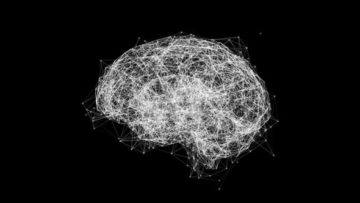 Since the modern era of research on autism began in the 1980s, questions about social cognition and social brain development have been of central interest to researchers. This year marks the 20th anniversary of the first annual meeting of the
Since the modern era of research on autism began in the 1980s, questions about social cognition and social brain development have been of central interest to researchers. This year marks the 20th anniversary of the first annual meeting of the 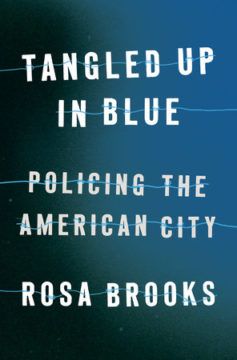 It’s hard to understand the culture of policing in America from the outside.
It’s hard to understand the culture of policing in America from the outside.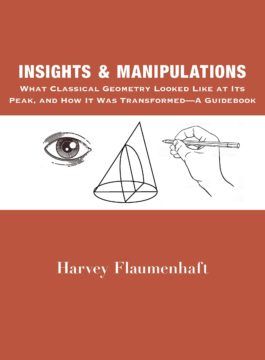 One pillar of the modern world was the project to transform science from a discipline for contemplating nature into a tool for mastering it. Queen among the new sciences was mathematical physics, made possible by a corresponding transformation of mathematics. Ancient mathematicians, said René Descartes, had misunderstood their subject. They offered a procession of dazzling spectacles, but mathematics properly understood is not the presentation of beautiful chance discoveries. It must instead provide a systematic method for solving problems.
One pillar of the modern world was the project to transform science from a discipline for contemplating nature into a tool for mastering it. Queen among the new sciences was mathematical physics, made possible by a corresponding transformation of mathematics. Ancient mathematicians, said René Descartes, had misunderstood their subject. They offered a procession of dazzling spectacles, but mathematics properly understood is not the presentation of beautiful chance discoveries. It must instead provide a systematic method for solving problems.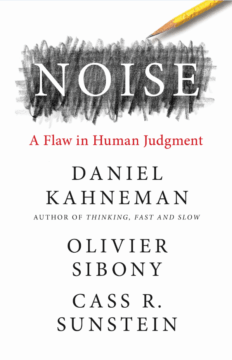 In a study of the effectiveness of putting calorie counts on menu items, consumers were more likely to make lower-calorie choices if the labels were placed to the left of the food item rather than the right.
In a study of the effectiveness of putting calorie counts on menu items, consumers were more likely to make lower-calorie choices if the labels were placed to the left of the food item rather than the right.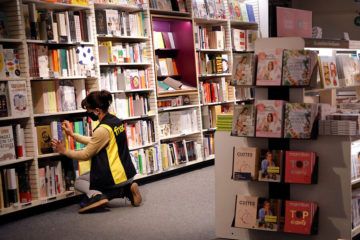 France’s literary institutions have long struggled with a diversity problem. Though France doesn’t collect statistics on race and ethnicity, a majority of top editors and authors have historically been white. Its literary awards heavily favor men: Since France’s top literature prize, the Prix Goncourt, began in 1903, only 12 women have won. The integration of marginalized literary voices, especially those of second-generation French or people of color, has come in fits and starts. Until the 1990s, literature written by children of immigrant parents of Maghrebis descent was categorized using a pejorative term for Arab. The publication of a 1999 novel by Rachid Djaïdani, which described daily life in France’s housing projects where many immigrants live, was a landmark in breaking the mold. Another was the publication in 2007 of a controversial literary collection by second-generation French writers about their complex relationship with France.
France’s literary institutions have long struggled with a diversity problem. Though France doesn’t collect statistics on race and ethnicity, a majority of top editors and authors have historically been white. Its literary awards heavily favor men: Since France’s top literature prize, the Prix Goncourt, began in 1903, only 12 women have won. The integration of marginalized literary voices, especially those of second-generation French or people of color, has come in fits and starts. Until the 1990s, literature written by children of immigrant parents of Maghrebis descent was categorized using a pejorative term for Arab. The publication of a 1999 novel by Rachid Djaïdani, which described daily life in France’s housing projects where many immigrants live, was a landmark in breaking the mold. Another was the publication in 2007 of a controversial literary collection by second-generation French writers about their complex relationship with France.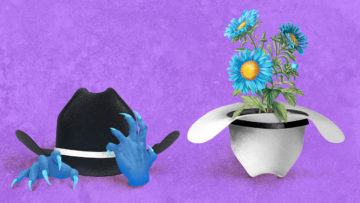 T
T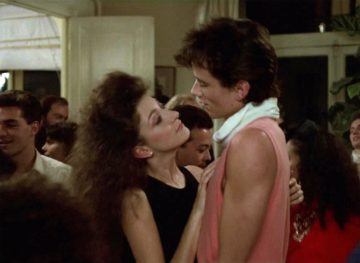 THE CHARACTERS
THE CHARACTERS “Everybody” ’s central character is the Viennese psychoanalyst
“Everybody” ’s central character is the Viennese psychoanalyst  An insect’s brain is organised completely differently from a mammal’s. It is also
An insect’s brain is organised completely differently from a mammal’s. It is also 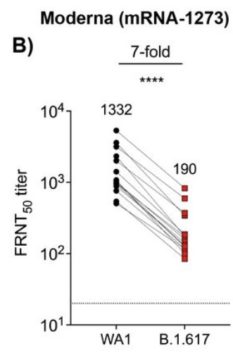 SARS-CoV-2 has caused a devastating global pandemic. The recent emergence of SARS-CoV-2 variants that are less sensitive to neutralization by convalescent sera or vaccine-induced neutralizing antibody responses has raised concerns. A second wave of SARS-CoV-2 infections in India is leading to the expansion of SARS-CoV-2 variants. The B.1.617.1 variant has rapidly spread throughout India and to several countries throughout the world. In this study, using a live virus assay, we describe the neutralizing antibody response to the B.1.617.1 variant in serum from infected and vaccinated individuals. We found that the B.1.617.1 variant is 6.8-fold more resistant to neutralization by sera from COVID-19 convalescent and Moderna and Pfizer vaccinated individuals. Despite this, a majority of the sera from convalescent individuals and all sera from vaccinated individuals were still able to neutralize the B.1.617.1 variant. This suggests that protective immunity by the mRNA vaccines tested here are likely retained against the B.1.617.1 variant. As the B.1.617.1 variant continues to evolve, it will be important to monitor how additional mutations within the spike impact antibody resistance, viral transmission and vaccine efficacy.
SARS-CoV-2 has caused a devastating global pandemic. The recent emergence of SARS-CoV-2 variants that are less sensitive to neutralization by convalescent sera or vaccine-induced neutralizing antibody responses has raised concerns. A second wave of SARS-CoV-2 infections in India is leading to the expansion of SARS-CoV-2 variants. The B.1.617.1 variant has rapidly spread throughout India and to several countries throughout the world. In this study, using a live virus assay, we describe the neutralizing antibody response to the B.1.617.1 variant in serum from infected and vaccinated individuals. We found that the B.1.617.1 variant is 6.8-fold more resistant to neutralization by sera from COVID-19 convalescent and Moderna and Pfizer vaccinated individuals. Despite this, a majority of the sera from convalescent individuals and all sera from vaccinated individuals were still able to neutralize the B.1.617.1 variant. This suggests that protective immunity by the mRNA vaccines tested here are likely retained against the B.1.617.1 variant. As the B.1.617.1 variant continues to evolve, it will be important to monitor how additional mutations within the spike impact antibody resistance, viral transmission and vaccine efficacy.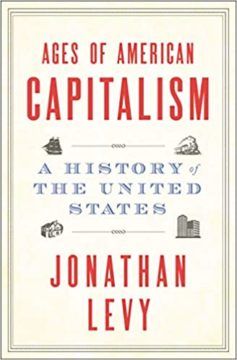 The start of Joe Biden’s presidency has prompted an unlikely reassessment of the direction of American capitalism. Announcing a “paradigm shift” away from a policy regime that for decades has ruthlessly favored the very wealthy, Biden has invoked the New Deal to capture his vision for activist government. Alongside the expansion of the welfare state, he has promised an ambitious developmental agenda that links together infrastructure, industrial policy, and an energy transition to fight climate change. Though Biden’s resolve to execute his vision remains untested, the prospects for aggressive state intervention now seem far greater than during the Great Recession, when austerity quickly became a transatlantic phenomenon.
The start of Joe Biden’s presidency has prompted an unlikely reassessment of the direction of American capitalism. Announcing a “paradigm shift” away from a policy regime that for decades has ruthlessly favored the very wealthy, Biden has invoked the New Deal to capture his vision for activist government. Alongside the expansion of the welfare state, he has promised an ambitious developmental agenda that links together infrastructure, industrial policy, and an energy transition to fight climate change. Though Biden’s resolve to execute his vision remains untested, the prospects for aggressive state intervention now seem far greater than during the Great Recession, when austerity quickly became a transatlantic phenomenon. The sudden eruption of war outside and inside Israel’s borders has shocked a complacent nation. Throughout Binyamin Netanyahu’s 12-year premiership, the Palestinian problem was buried and forgotten. The recent Abraham Accords, establishing diplomatic relations with four Arab states, seemed to weaken the Palestinian cause further. Now it has re-emerged with a vengeance.
The sudden eruption of war outside and inside Israel’s borders has shocked a complacent nation. Throughout Binyamin Netanyahu’s 12-year premiership, the Palestinian problem was buried and forgotten. The recent Abraham Accords, establishing diplomatic relations with four Arab states, seemed to weaken the Palestinian cause further. Now it has re-emerged with a vengeance.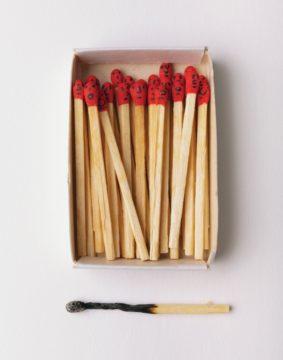 Burnout is generally said to date to 1973; at least, that’s around when it got its name. By the nineteen-eighties, everyone was burned out. In 1990, when the Princeton scholar Robert Fagles published a new English translation of the Iliad, he had Achilles tell Agamemnon that he doesn’t want people to think he’s “a worthless, burnt-out coward.” This expression, needless to say, was not in Homer’s original Greek. Still, the notion that people who fought in the Trojan War, in the twelfth or thirteenth century B.C., suffered from burnout is a good indication of the disorder’s claim to universality: people who write about burnout tend to argue that it exists everywhere and has existed forever, even if, somehow, it’s always getting worse. One Swiss psychotherapist, in a history of burnout published in 2013 that begins with the usual invocation of immediate emergency—“Burnout is increasingly serious and of widespread concern”—insists that he found it in the Old Testament. Moses was burned out, in Numbers 11:14, when he complained to God, “I am not able to bear all this people alone, because it is too heavy for me.” And so was Elijah, in 1 Kings 19, when he “went a day’s journey into the wilderness, and came and sat down under a juniper tree: and he requested for himself that he might die; and said, It is enough.”
Burnout is generally said to date to 1973; at least, that’s around when it got its name. By the nineteen-eighties, everyone was burned out. In 1990, when the Princeton scholar Robert Fagles published a new English translation of the Iliad, he had Achilles tell Agamemnon that he doesn’t want people to think he’s “a worthless, burnt-out coward.” This expression, needless to say, was not in Homer’s original Greek. Still, the notion that people who fought in the Trojan War, in the twelfth or thirteenth century B.C., suffered from burnout is a good indication of the disorder’s claim to universality: people who write about burnout tend to argue that it exists everywhere and has existed forever, even if, somehow, it’s always getting worse. One Swiss psychotherapist, in a history of burnout published in 2013 that begins with the usual invocation of immediate emergency—“Burnout is increasingly serious and of widespread concern”—insists that he found it in the Old Testament. Moses was burned out, in Numbers 11:14, when he complained to God, “I am not able to bear all this people alone, because it is too heavy for me.” And so was Elijah, in 1 Kings 19, when he “went a day’s journey into the wilderness, and came and sat down under a juniper tree: and he requested for himself that he might die; and said, It is enough.” Evolutionary biologist David Baum was thrilled to flick through a preprint in August 2019 and come face-to-face — well, face-to-cell — with a distant cousin. Baum, who works at the University of Wisconsin–Madison, was looking at an archaeon: a type of microorganism best known for living in extreme environments, such as deep-ocean vents and acid lakes. Archaea can look similar to bacteria, but have about as much in common with them as they do with a banana. The one in the bioRxiv preprint had tentacle-like projections, making the cells look like meatballs with some strands of spaghetti attached. Baum had spent a lot of time imagining what humans’ far-flung ancestors might look like, and this microbe was a perfect doppelgänger.
Evolutionary biologist David Baum was thrilled to flick through a preprint in August 2019 and come face-to-face — well, face-to-cell — with a distant cousin. Baum, who works at the University of Wisconsin–Madison, was looking at an archaeon: a type of microorganism best known for living in extreme environments, such as deep-ocean vents and acid lakes. Archaea can look similar to bacteria, but have about as much in common with them as they do with a banana. The one in the bioRxiv preprint had tentacle-like projections, making the cells look like meatballs with some strands of spaghetti attached. Baum had spent a lot of time imagining what humans’ far-flung ancestors might look like, and this microbe was a perfect doppelgänger.